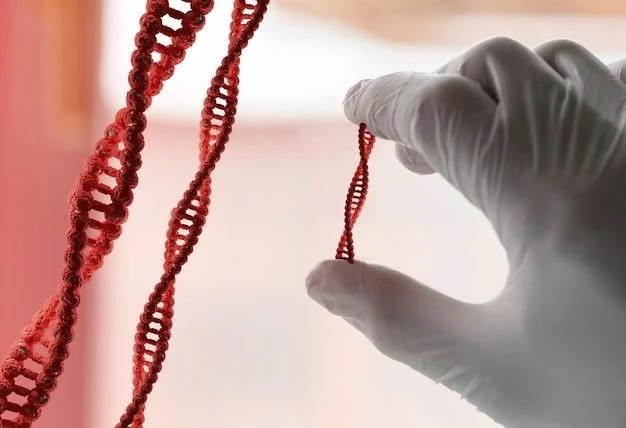Introduction
Hereditary pyropoikilocytosis (HPP) is an autosomal recessive form of hemolytic anemia characterized by abnormal red blood cell sensitivity to heat and distinctive erythrocyte morphology.
Overview of Hereditary Pyropoikilocytosis (HPP)
Hereditary pyropoikilocytosis (HPP) is a rare autosomal recessive form of hemolytic anemia distinguished by abnormal red blood cell sensitivity to heat and distinctive erythrocyte morphology. The condition often presents in infancy with severe hemolysis and anemia, causing red blood cells to become fragmented and microspherocytes. HPP is closely related to hereditary elliptocytosis, with mutations in the spectrin gene leading to disrupted spectrin self-association.
Clinical Features
Patients with hereditary pyropoikilocytosis (HPP) may experience severe hemolysis, anemia, and abnormal red blood cell morphology sensitive to heat, resembling thermal burns. Infantile onset is common.
Symptoms and Presentation
Patients with hereditary pyropoikilocytosis (HPP) typically exhibit severe hemolysis, leading to anemia, and distinct red blood cell fragility triggered by heat exposure. This condition often manifests in infancy with symptoms such as fragmented red blood cells, microspherocytes, and a need for transfusions due to ongoing hemolysis and anemia.
Genetics
Hereditary pyropoikilocytosis (HPP) is an autosomal recessive disorder caused by mutations in the genes encoding the red blood cell cytoskeleton proteins, leading to disrupted spectrin self-association.
Hereditary pyropoikilocytosis (HPP) follows an autosomal recessive pattern of inheritance, with mutations in the genes responsible for red blood cell cytoskeletal proteins leading to disrupted spectrin self-association, resulting in the characteristic features of the disorder.
Diagnosis
Diagnosis of hereditary pyropoikilocytosis (HPP) involves assessing red blood cell morphology under heat exposure, identifying fragmented cells, and confirming genetic mutations in cytoskeletal proteins.
Autosomal Recessive Inheritance
Hereditary pyropoikilocytosis (HPP) is inherited in an autosomal recessive manner, where both parents must pass on a mutated gene to the child for the condition to manifest. Mutations in genes encoding red blood cell cytoskeletal proteins lead to the abnormal features seen in HPP.
Treatment
The management of hereditary pyropoikilocytosis (HPP) may involve regular blood transfusions, splenectomy, and supportive care to address anemia and hemolysis. Patients may benefit from genetic counseling and close monitoring to optimize treatment outcomes.
Laboratory Findings
The diagnosis of hereditary pyropoikilocytosis (HPP) involves analyzing blood samples for distinct morphological changes in red blood cells, such as microspherocytosis, poikilocytosis, and abnormal thermal sensitivity. Genetic testing may also reveal mutations in the spectrin gene associated with disrupted spectrin self-association.
Complications
Potential complications of hereditary pyropoikilocytosis (HPP) include severe hemolysis, anemia, and red blood cell abnormalities sensitive to heat, requiring interventions such as blood transfusions and close monitoring.
Potential Impact on Patients
Hereditary pyropoikilocytosis (HPP) can significantly impact patients by causing severe hemolysis, anemia, and unique red blood cell abnormalities sensitive to heat exposure, necessitating careful management and monitoring to address the challenging clinical manifestations of the disorder.
Prognosis
Individuals with hereditary pyropoikilocytosis (HPP) may face challenges due to severe hemolysis and anemia; however, with appropriate management and monitoring, many can achieve a stable prognosis.
Outlook for Individuals with HPP
Individuals diagnosed with hereditary pyropoikilocytosis (HPP) face a challenging outlook due to the severe hemolysis, anemia, and distinct red blood cell abnormalities sensitive to heat exposure. However, with proper management and support, many individuals can strive for a better quality of life and improved health outcomes.

Epidemiology
The prevalence of hereditary pyropoikilocytosis (HPP) is rare, and it most commonly affects infants, presenting as a severe form of hemolytic anemia with unique red blood cell abnormalities.
Prevalence and Population Affected
Hereditary pyropoikilocytosis (HPP) is a rare congenital disorder primarily affecting infants, leading to severe hemolytic anemia due to unique red blood cell abnormalities sensitive to heat exposure. The prevalence of HPP is low, with most cases diagnosed in childhood, highlighting the impact of this condition on affected individuals and families.

Research and Advances
Current studies aim to understand the underlying genetic mutations causing hereditary pyropoikilocytosis (HPP) better. Advances in treatment modalities are being explored to enhance patient outcomes.
Current Studies and Developments in HPP
Research efforts are ongoing to delve deeper into the genetic mutations causing hereditary pyropoikilocytosis (HPP) and explore innovative treatment modalities to provide enhanced care and better outcomes for patients affected by this rare disorder.
Support and Resources
Patients and families affected by hereditary pyropoikilocytosis (HPP) can benefit from information, genetic testing support, and resources available through organizations like the GARD Contact Center, providing personalized responses and assistance.
Information and Assistance for Patients and Families
Patients and families impacted by hereditary pyropoikilocytosis (HPP) can seek guidance and support from specialized organizations such as the GARD Contact Center, offering tailored information, advice, and resources for genetic testing and managing the challenges associated with this rare condition.
In conclusion, hereditary pyropoikilocytosis (HPP) presents unique challenges with severe hemolysis and anemia; however, ongoing research and support services aim to improve outcomes for affected individuals.
Summary of Hereditary Pyropoikilocytosis
Hereditary pyropoikilocytosis (HPP) is a rare autosomal recessive form of hemolytic anemia characterized by unique red blood cell abnormalities sensitive to heat exposure, often presenting in infancy with severe anemia and distinctive erythrocyte morphology. The condition is closely related to hereditary elliptocytosis, with disruptions in spectrin self-association contributing to the clinical manifestations of HPP. Ongoing advancements in research and management offer hope for improved outcomes for individuals affected by this rare disorder.
